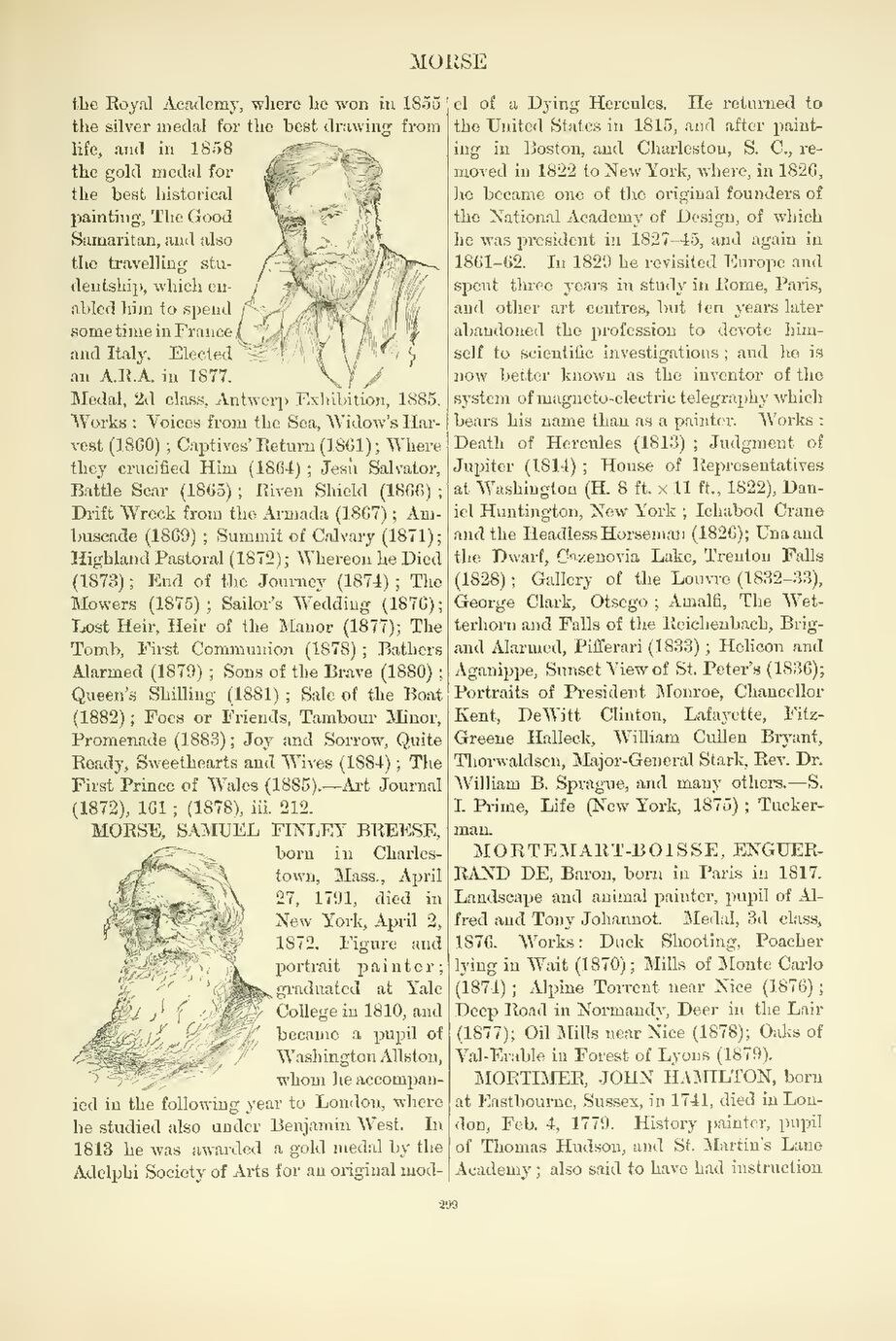the Royal Academy, where he won in 1855 the silver medal for the best drawing from life, and in 1858 the gold medal for the best historical painting, The Good Samaritan, and also the travelling studentship, which enabled him to spend some time in France and Italy. Elected an A.R.A. in 1877. Medal, 2d class, Antwerp Exhibition, 1885. Works: Voices from the Sea, Widow's Harvest (1860); Captives' Return (1861); Where they crucified Him (1864); Jesù Salvator, Battle Scar (1865); Riven Shield (1866); Drift Wreck from the Armada (1867); Ambuscade (1869); Summit of Calvary (1871); Highland Pastoral (1872); Whereon he Died (1873); End of the Journey (1874); The Mowers (1875); Sailor's Wedding (1876); Lost Heir, Heir of the Manor (1877); The Tomb, First Communion (1878); Bathers Alarmed (1879); Sons of the Brave (1880); Queen's Shilling (1881); Sale of the Boat (1882); Foes or Friends, Tambour Minor, Promenade (1883); Joy and Sorrow, Quite Ready, Sweethearts and Wives (1884); The First Prince of Wales (1885).—Art Journal (1872), 161; (1878), iii. 212.
An image should appear at this position in the text. To use the entire page scan as a placeholder, edit this page and replace "{{missing image}}" with "{{raw image|Cyclopedia of painters and paintings (IA cyclopediaofpain03cham).pdf/321}}". Otherwise, if you are able to provide the image then please do so. For guidance, see Wikisource:Image guidelines and Help:Adding images. |
An image should appear at this position in the text. To use the entire page scan as a placeholder, edit this page and replace "{{missing image}}" with "{{raw image|Cyclopedia of painters and paintings (IA cyclopediaofpain03cham).pdf/321}}". Otherwise, if you are able to provide the image then please do so. For guidance, see Wikisource:Image guidelines and Help:Adding images. |
MORSE, SAMUEL FINLEY BREESE,
born in Charlestown,
Mass., April
27, 1791, died in
New York, April 2,
1872. Figure and
portrait painter;
graduated at Yale
College in 1810, and
became a pupil of
Washington Allston,
whom he accompanied
in the following year to London, where
he studied also under Benjamin West. In
1813 he was awarded a gold medal by the
Adelphi Society of Arts for an original model
of a Dying Hercules. He returned to
the United States in 1815, and after painting
in Boston, and Charleston, S. C., removed
in 1822 to New York, where, in 1826,
he became one of the original founders of
the National Academy of Design, of which
he was president in 1827-45, and again in
1861-62. In 1829 he revisited Europe and
spent three years in study in Rome, Paris,
and other art centres, but ten years later
abandoned the profession to devote himself
to scientific investigations; and he is
now better known as the inventor of the
system of magneto-electric telegraphy which
bears his name than as a painter. Works:
Death of Hercules (1813); Judgment of
Jupiter (1814); House of Representatives
at Washington (H. 8 ft. × 11 ft., 1822), Daniel
Huntington, New York; Ichabod Crane
and the Headless Horseman (1826); Una and
the Dwarf, Cazenovia Lake, Trenton Falls
(1828); Gallery of the Louvre (1832-33),
George Clark, Otsego; Amalfi, The Wetterhorn
and Falls of the Reichenbach, Brigand
Alarmed, Pifferari (1833); Helicon and
Aganippe, Sunset View of St. Peter's (1836);
Portraits of President Monroe, Chancellor
Kent, DeWitt Clinton, Lafayette, Fitz-Greene
Halleck, William Cullen Bryant,
Thorwaldsen, Major-General Stark, Rev. Dr.
William B. Sprague, and many others.—S.
I. Prime, Life (New York, 1875); Tuckerman.
MORTEMART-BOISSE, ENGUERRAND
DE, Baron, born in Paris in 1817.
Landscape and animal painter, pupil of Alfred
and Tony Johannot. Medal, 3d class,
1876. Works: Duck Shooting, Poacher
lying in Wait (1870); Mills of Monte Carlo
(1874); Alpine Torrent near Nice (1876);
Deep Road in Normandy, Deer in the Lair
(1877); Oil Mills near Nice (1878); Oaks of
Val-Erable in Forest of Lyons (1879).
MORTIMER, JOHN HAMILTON, born
at Eastbourne, Sussex, in 1741, died in London,
Feb. 4, 1779. History painter, pupil
of Thomas Hudson, and St. Martin's Lane
Academy; also said to have had instruction
